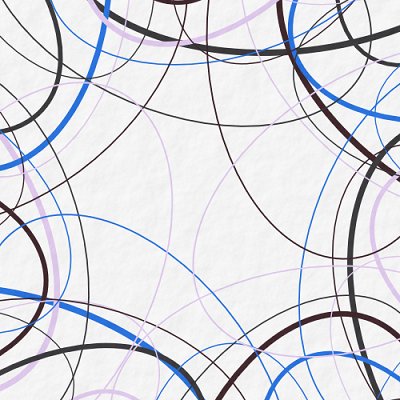結果
| 問題 | No.898 tri-βutree |
| コンテスト | |
| ユーザー |
 ferin ferin
|
| 提出日時 | 2019-10-04 21:52:28 |
| 言語 | C++14 (gcc 13.3.0 + boost 1.89.0) |
| 結果 |
WA
|
| 実行時間 | - |
| コード長 | 6,179 bytes |
| 記録 | |
| コンパイル時間 | 2,058 ms |
| コンパイル使用メモリ | 192,836 KB |
| 実行使用メモリ | 35,452 KB |
| 最終ジャッジ日時 | 2024-10-03 07:30:25 |
| 合計ジャッジ時間 | 8,574 ms |
|
ジャッジサーバーID (参考情報) |
judge3 / judge2 |
(要ログイン)
| ファイルパターン | 結果 |
|---|---|
| sample | AC * 1 |
| other | AC * 1 WA * 20 |
ソースコード
#include <bits/stdc++.h>
using namespace std;
using ll = long long;
// #define int ll
using PII = pair<ll, ll>;
#define FOR(i, a, n) for (ll i = (ll)a; i < (ll)n; ++i)
#define REP(i, n) FOR(i, 0, n)
#define ALL(x) x.begin(), x.end()
template<typename T> T &chmin(T &a, const T &b) { return a = min(a, b); }
template<typename T> T &chmax(T &a, const T &b) { return a = max(a, b); }
template<typename T> bool IN(T a, T b, T x) { return a<=x&&x<b; }
template<typename T> T ceil(T a, T b) { return a/b + !!(a%b); }
template<typename T> vector<T> make_v(size_t a) { return vector<T>(a); }
template<typename T,typename... Ts>
auto make_v(size_t a,Ts... ts) {
return vector<decltype(make_v<T>(ts...))>(a,make_v<T>(ts...));
}
template<typename T,typename V> typename enable_if<is_class<T>::value==0>::type
fill_v(T &t, const V &v) { t=v; }
template<typename T,typename V> typename enable_if<is_class<T>::value!=0>::type
fill_v(T &t, const V &v ) { for(auto &e:t) fill_v(e,v); }
template<class S,class T>
ostream &operator <<(ostream& out,const pair<S,T>& a){
out<<'('<<a.first<<','<<a.second<<')'; return out;
}
template<class T>
ostream &operator <<(ostream& out,const vector<T>& a){
out<<'['; for(T i: a) {out<<i<<',';} out<<']'; return out;
}
int dx[] = {0, 1, 0, -1}, dy[] = {1, 0, -1, 0}; // DRUL
const int INF = 1<<30;
const ll LLINF = 1LL<<60;
const ll MOD = 1000000007;
struct HLDecomposition {
int n, pos;
vector<vector<ll>> g;
vector<ll> vid, // HL分解後のグラフでのid
head, // 頂点が属するheavy-pathのheadのid
sub, // 部分木のサイズ
hvy, // heavy-path上での次の頂点のid
par, // 親のid
depth, // 深さ
inv, // HL分解前のグラフのid(添え字が分解後のid)
type, // 森をHL分解するときの属する木の番号
ps, // 行きがけ順
pt; // 帰りがけ順
// 根rtからdfsして部分木の大きさ、heavy-edgeの判定などをする
void dfs1(ll rt) {
stack<PII> st;
par[rt] = -1;
depth[rt] = 0;
st.emplace(rt, 0);
while(st.size()) {
ll v = st.top().first;
ll &i = st.top().second;
if(i < (ll)g[v].size()) {
ll u = g[v][i++];
if(u == par[v]) continue;
par[u] = v;
depth[u] = depth[v]+1;
st.emplace(u, 0);
} else {
st.pop();
for(ll &u: g[v]){
if(u == par[v]) swap(u, g[v].back());
if(u == par[v]) continue;
sub[v] += sub[u];
if(sub[u]>sub[g[v].front()]) swap(u, g[v].front());
}
}
}
}
// 根r、c番目の木についてchainについての情報をまとめる
void dfs2(ll r, ll c) {
using T = tuple<ll, ll, ll>;
stack<T> st;
st.emplace(r,r,0);
while(!st.empty()) {
ll v,h;
tie(v,h,ignore)=st.top();
ll &i=get<2>(st.top());
if(!i) {
type[v]=c;
ps[v]=vid[v]=pos++;
inv[vid[v]]=v;
head[v]=h;
hvy[v]=(g[v].empty()?-1:g[v][0]);
if(hvy[v]==par[v]) hvy[v]=-1;
}
if(i<(ll)g[v].size()) {
ll u=g[v][i++];
if(u==par[v]) continue;
st.emplace(u,(hvy[v]==u?h:u),0);
} else {
st.pop();
pt[v]=pos;
}
}
}
HLDecomposition(){}
HLDecomposition(ll sz):
n(sz), pos(0), g(n),
vid(n,-1), head(n), sub(n,1), hvy(n,-1),
par(n), depth(n), inv(n), type(n), ps(n), pt(n) {}
void add_edge(ll u, ll v) {
g[u].push_back(v);
g[v].push_back(u);
}
void build(vector<ll> rs=vector<ll>(1,0)) {
ll c=0;
for(ll r: rs) {
dfs1(r);
dfs2(r, c++);
}
}
// 頂点に対する処理 [u,v] 開区間なので注意!!!
void for_each(ll u, ll v, const function<void(ll,ll)>& f) {
while(1){
if(vid[u]>vid[v]) swap(u,v);
// [max(vid[head[v]],vid[u]), vid[v]] の区間についての操作を行う
f(max(vid[head[v]], vid[u]), vid[v]);
if(head[u]!=head[v]) v = par[head[v]];
else break;
}
}
// 辺に対する処理 [u,v] 開区間なので注意!!!
void for_each_edge(ll u, ll v, const function<void(ll,ll)>& f) {
while(1) {
if(vid[u]>vid[v]) swap(u,v);
if(head[u]!=head[v]) {
f(vid[head[v]], vid[v]);
v = par[head[v]];
} else {
if(u!=v) f(vid[u]+1, vid[v]);
break;
}
}
}
ll lca(ll u, ll v) {
while(1) {
if(vid[u]>vid[v]) swap(u,v);
if(head[u]==head[v]) return u;
v = par[head[v]];
}
}
ll distance(ll u, ll v) {
return depth[u] + depth[v] - 2*depth[lca(u,v)];
}
};
/*
パスu-vの頂点属性クエリ → hld.for_each(u, v, f)
パスu-vの辺属性クエリ → hld.for_each_edge(u, v, f)
頂点vの部分木に対するクエリ → 区間[hld.vid[u]+1, hld.vid[u] + hld.sub[u]) に操作
*/
signed main(void)
{
cin.tie(0);
ios::sync_with_stdio(false);
ll n;
cin >> n;
vector<vector<PII>> g(n);
HLDecomposition hld(n);
REP(i, n-1) {
ll a, b, c;
cin >> a >> b >> c;
g[a].push_back({b, c});
g[b].push_back({a, c});
hld.add_edge(a, b);
}
hld.build();
vector<ll> dist(n);
function<void(ll,ll)> dfs = [&](ll v, ll p) {
for(auto to: g[v]) {
if(to.first == p) continue;
dist[to.first] = dist[v] + to.second;
dfs(to.first, v);
}
};
dfs(0, -1);
ll q;
cin >> q;
while(q--) {
ll x, y, z;
cin >> x >> y >> z;
ll ret = dist[x] + dist[y] + dist[z];
ret -= dist[hld.lca(x, y)];
ret -= dist[hld.lca(x, z)];
ret -= dist[hld.lca(y, z)];
ll lca = hld.lca(hld.lca(x, y), z);
ret += dist[lca];
cout << ret << endl;
}
return 0;
}
